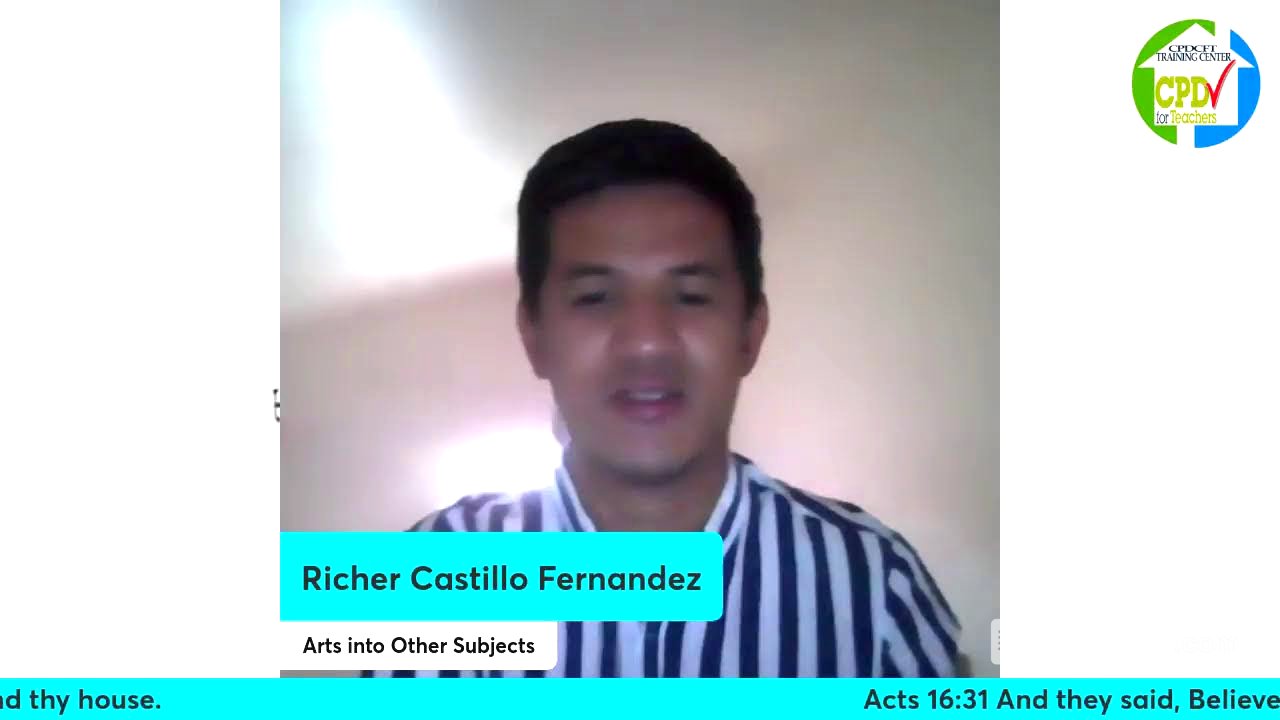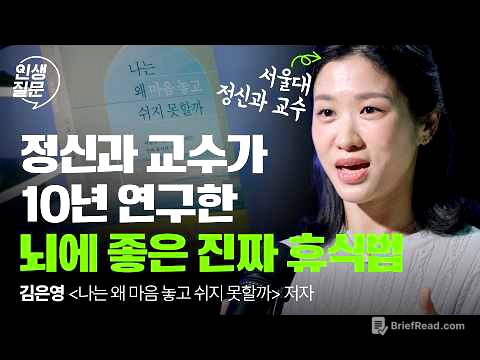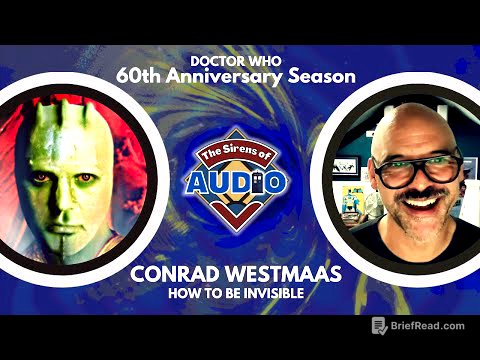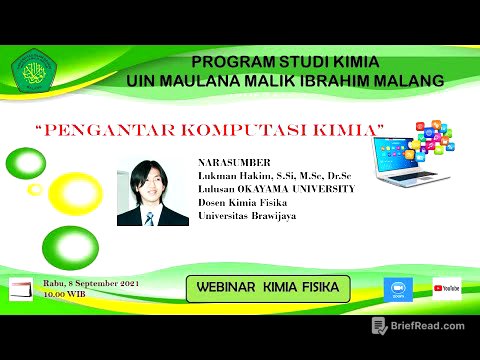TLDR;
This video discusses integrating arts into various subjects like STEM, Filipino history, and literature, emphasizing the benefits of this approach, such as connecting learning to real life, developing soft skills, and catering to individual differences. It also explores collaborative projects between music and art in schools, providing practical strategies and examples for teachers to implement in their classrooms.
- Integrative approach connects concepts to the real world and builds soft skills.
- Art integration makes lessons more engaging, creative, and fun.
- Various strategies for integrating art into STEM, Filipino history, and literature are provided.
Introduction: Integrating Arts into Education [6:53]
The speaker introduces the topic of integrating arts into other subjects, referring to it as "teach arts," emphasizing that teachers are artists who naturally incorporate arts into their teaching. The session aims to share practices and provide new insights into integrating arts across different disciplines.
Understanding the Integrative Approach [8:30]
The integrative approach connects concepts to the real world, allowing students to apply their learning to daily life and build essential soft skills like determination, communication, and empathy. It emphasizes that subjects are interconnected and that art can enhance understanding and engagement in lessons. This approach moves away from isolated lectures, highlighting the relationships between different disciplines.
Characteristics of Integrative Learning [12:27]
Integrative learning connects school learning to real-life situations and considers learners' individual differences, targeting multiple intelligences. It balances the cognitive, affective, and psychomotor domains of learning objectives and integrates values, enriching the learning experience beyond traditional subject matter.
Defining Art and Its Role in Education [16:02]
Art is defined as a visual object or experience consciously created through skill or imagination, encompassing various media such as painting, sculpture, photography, and performing arts like dance, music, and theater. Integrating art allows students to connect to the real world, explore their imagination, and learn topics effectively, hitting multiple objectives with one lesson plan.
Integrating Arts into STEM Education [19:18]
Integrating arts into STEM (Science, Technology, Engineering, and Mathematics) provides students with a way to internalize concepts, process information, visualize, and think metaphorically. It encourages creativity, motivates students, and can lead to pursuing STEM careers. The speaker shares personal experiences and highlights the importance of providing opportunities for creative expression in STEM subjects.
Nine Strategies for Integrating Arts into STEM [24:46]
The speaker suggests nine teaching strategies for integrating arts into STEM, including:
- Choice Boards or Project-Based Learning: Allowing students to choose activities like making videos, writing stories, or creating songs to explain STEM concepts.
- Photo Scrapbooks: Creating scrapbooks with collages or mosaics to represent topics like states of matter or parts of a flower.
- Graphic Design or Graphic Organizers: Encouraging students to create visual representations of concepts using colorful graphs and charts.
- Art-Based Assessment: Using creative assessments like creating a tree representing family traits or an artistic display of equivalent fractions.
- End Result Display: Displaying students' artwork to provide affirmation and motivation.
- Tweak a Current Project: Adjusting existing projects to integrate artistic design, such as designing a geometric rug for a floor plan project.
- Drawing from Famous Art: Analyzing famous artworks, songs, or poems to understand STEM concepts, such as identifying geometric figures in a painting.
- Creative Quizzes: Replacing traditional quizzes with creative versions like color-by-number activities.
- Doodle Notes: Integrating art with note-taking to improve focus, memory, and problem-solving skills.
Integrating Arts into Filipino History and Literature [46:17]
Integrating arts into language and literature teaching develops language skills, makes learning more engaging, and boosts motivation and confidence. It also enhances critical thinking and cultural awareness. The speaker emphasizes using local materials to inspire students and make the content more relatable.
Suggested Activities for Language and Literature [53:17]
Suggested activities include:
- Comic Strip Creation: Writing stories about types of speech and presenting them in comic strip form.
- Word Association through Word Cloud: Creating images using words associated with a general topic and explaining the associations.
- Picture Perfect Story: Taking pictures from home or the community, listing words inspired by the pictures, and creating a short story.
- Drawing the Poem: Interpreting a poem through drawings and explaining the interpretations.
- Book Cover Design: Creating book cover designs to demonstrate understanding of a story.
Additional activities include playing or making instruments, composing songs, chanting, rapping, listening to music or poetry, drama, games, charades, pantomime, clay sculpture, and photography.
Integrating Arts into Teaching History [1:15:55]
Art is a valuable tool for teaching history, as photos, drawings, and paintings can communicate information about historical events. Students can analyze art pieces to investigate perspectives and decisions. The speaker emphasizes selecting relevant artworks, exploring various media types, and providing interpretations to scaffold learning.
Tips and Activities for Integrating Art in History [1:17:36]
Tips include:
- Selecting works of art that represent the topic.
- Assessing students' familiarity with the content.
- Exploring a range of media types, including digital art.
- Providing interpretations of the work.
- Modeling the process of analyzing visual composition.
- Connecting art to historical events.
Example activities include creating a Facebook timeline of historical events, painting artworks inspired by historical periods, creating pop art posters, making collages, chalk drawings on stone, news reporting, and one-act plays.
Collaborative Projects Between Arts and Music in Schools [1:33:27]
The speaker shares ideas for collaborative projects between arts and music, such as:
- Music and Art Museum: Turning the classroom into a museum with student artworks and musical performances related to a specific theme.
- Performing Cosplayers: Students cosplay as characters and perform songs or dances related to those characters, using recycled materials for costumes.
- Shadow Playing: Creating shadow plays based on songs, telling stories through images and music.
- Listen and Paint: Students listen to music and paint what they feel, using colors to represent their emotions.
- Music and Puppetry/Clay through Stop Motion: Creating stop motion animations with puppets or clay, incorporating songs that suit the story.









